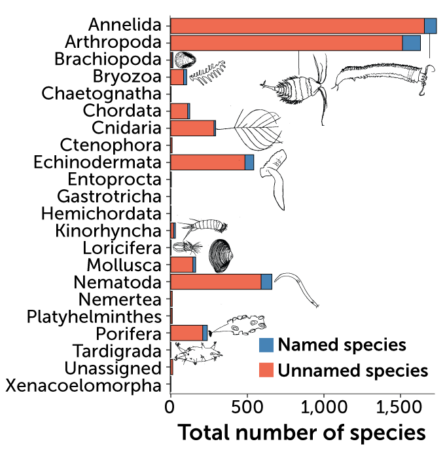More than 5,000 animal species previously unknown to science live in a pristine part of the deep sea.
Their home — called the Clarion-Clipperton Zone — sits in the central and eastern Pacific Ocean between Hawaii and Mexico. The zone is roughly twice the size of India, sits 4,000 to 6,000 meters deep and is largely a mystery, like much of the deep sea.
In a new study, scientists amassed and analyzed more than 100,000 published records of animals found in the zone, with some records dating back to the 1870s. About 90 percent of species from these records were previously undescribed: There were only about 440 named species compared with roughly 5,100 without scientific names. Worms and arthropods make up the bulk of the undescribed creatures, but other animals found there include sponges, sea cucumbers and corals, the researchers report May 25 in Current Biology.
“The diversity down there does surprise me,” says study coauthor Muriel Rabone, a data analyst and biologist at the Natural History Museum in London. “It’s just astonishing.”
Due to its rich content of minerals like cobalt and nickel, the Clarion-Clipperton Zone is sought after by mining companies. About a sixth of it, roughly a million square kilometers, has already been promised to companies for exploration.
Many of the named species in the new study have been found only in the zone, emphasizing how important it is to establish a biodiversity baseline for the area before mining starts, Rabone says. But the area is deep and remote, making data collection there difficult and expensive (SN: 11/10/17).
What’s more, deep-sea ecosystems are connected to the ecosystems above them, Rabone says, such as through nutrient cycling. Scientists need to understand more about the Clarion-Clipperton Zone and areas like it to anticipate how the effects of mining may bubble up to the ocean surface.



